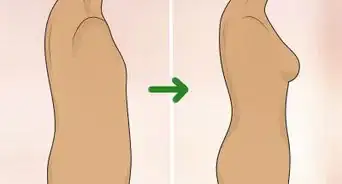This article was co-authored by Lauren Urban, LCSW. Lauren Urban is a licensed psychotherapist in Brooklyn, New York, with over 13 years of therapy experience working with children, families, couples, and individuals. She received her Masters in Social Work from Hunter College in 2006, and specializes in working with the LGBTQIA community and with clients in recovery or considering recovery for drug and alcohol use.
This article has been viewed 22,205 times.
Transgender and non-binary people frequently experience distress due to the fact that their sex or assigned gender identity does not match their lived gender identity. This is called "gender dysphoria." Gender dysphoria can be especially hard to cope with when you're closeted, but the good news is that there are things that closeted trans and non-binary people can do to minimize gender dysphoria. This guide provides tips and tricks to help closeted trans and non-binary people feel less dysphoric.
Steps
For Transmasculine People
-
1Wear boxers. Even if you can't necessarily wear the clothes you want on the outside, masculine underwear on the inside can ease dysphoria a lot. You can shop for traditional boxers in the men's section of most clothing stores. Most people will just assume you are shopping for a male friend or family member. If men's underwear is not an option, there is an online brand of boxer briefs designed for women called Woxer which may be more inconspicuous to purchase, but still achieves the same effect.
-
2Grow out your body hair. Yes, there's certainly a double standard when it comes to body hair, but in general trans men can feel more masculine when they have more body hair. Besides, it is a subtle way of altering your outwards appearance without drawing too much questioning from people as society has grown more accepting for people's body hair choices.Advertisement
-
3Put on cologne. Many people will associate manliness with the musky smell of cologne. Because smells have a huge subconscious effect on us, the cologne can not only make others indirectly perceive you as more masculine, but also alleviate your own dysphoria. If you feel like you might be too noticeable with it, you could also opt for more musky women's perfumes.
-
4Get a shaved or short haircut. Hair is a major part of appearance, and an especially important form of expression for LGBTQ folks. Even if you can't get a traditional men's haircut, cutting your hair short or even getting parts of it shaved (like an undercut) can help you feel more masculine, or at least more gender non-conforming. These alternative hairstyles aren't unseen in women so in case you need a cover-up, you can bring up that point.
-
5Wear baggy clothing. While women's fashion is usually designed to be curve-hugging and form-fitting, that will be the opposite of what you want. Baggy clothing like hoodies and comfortable jeans can help you look more androgynous as the more obvious feminine features of your physique are hidden. Additionally, this fashion choice can be rather gender-neutral and won't make you stick out too much.
-
6Build muscle. This is a good tip if you can access a gym. While fitness is a gender-neutral activity, the types of exercises you do and the way you do it can help you feel more masculine. Building muscle mass in your arms, shoulders and legs gives you less of a dainty, feminine look. Besides, exercise has been shown to improve mental health and make you feel better about yourself.
-
7Wear button-ups. They are stylish, comfortable and give your chest a flatter look without binding, though you can always wear both at the same time. Button-ups are unisex but do generally lean more towards masculine expression. Be sure to know that women's button-ups are usually made of flimsier materials and have a more curvy fit.
-
8Wear masculine accessories. If you want or have to wear jewellery, opt for more masculine things such as leather bracelets, non-shiny stud earrings and plain rings with thick bands.
For Transfeminine people
-
1Wear feminine underwear. Underwear isn't something everybody will see and is thus a discreet way to wear gender-affirming clothes. You might also want to look into tucking, which is the opposite of packing. Again, it is always easy to explain away that you are shopping for a female friend when you're browsing.
-
2Wear subtle makeup. While closeted, feminine makeup might seem out of the question but it is still possible. Pigmented chapstick is one way you can apply colour to your lips without an obvious shade like lipstick would. Besides, chapstick is a gender-neutral product and won't be suspicious at first glance. When applying foundation and blush, make sure not to overdo it so it looks natural. Avoid shiny or dramatic colours in your makeup kit.
-
3Deal with body hair. Keeping your body relatively hairless might help with dysphoria as smooth skin is considered feminine. Of course, keeping your face cleanly shaven is the most effective since facial hair is a prominent mark of masculinity. Additionally, hair removal isn't necessarily suspicious as it is becoming increasingly common for both genders.
-
4Style your hair. Let your hair grow to a length that can be tied up. If that's not possible, you can still brush your hair and style it with bobby pins. Long hair is traditionally feminine but not unseen in men, so there is low suspicion. For bobby pins, you can explain that they are just to keep hair out of your face. Shop for hair products that are geared more towards women. They make your hair smell good and feel silky soft, which can help you feel more feminine.
-
5Wear form-fitting clothes. If possible, shop for gender-neutral clothing in the women's section. That is because while the clothing itself might not appear gendered, the subtle difference in the cut will make you appear to have a more feminine body. Skinny jeans are especially useful. They are trendy for both genders but highlight the curves of your legs well.
-
6Grow out and paint your nails. Putting actual colour on your nails may draw you some attention, but you can still experience the feeling of painting your nails by putting a clear top coat on them. Growing out your nails may help too, but be sure not to make them too long or it will be noticeable (unless you play guitar).
-
7Wear jewellery. Even wearing gender-neutral jewellery can help you feel more feminine. This includes plain-coloured earrings, pendant necklaces, watches, and single band rings. If you cannot get your hands on those, wearing hair ties around your wrist will also give you the feeling of a bracelet. If questioned, you can always explain you are holding them for any girl that needs it, or it is for yourself (if you have long hair).
General Tips for Feeling Less Dysphoric
-
1Understand your dysphoria. Despite it being the single unifying issue for the transgender community, everyone experiences dysphoria differently. Some may find it occasionally uncomfortable to think of, and others may struggle to even look at themselves due to it. By knowing how, when and why it affects you, you will be more prepared when dysphoria hits. Ask yourself these questions:
- What are my triggers? (e.g. being misgendered? taking a shower?)
- What are my protective factors? (e.g. therapist? meditation techniques? friends?)
- When do I feel dysphoric? (e.g. every day? once in a while?)
- What kind of things make me feel dysphoric? (e.g. certain body parts? your name? certain clothes? the idea of being perceived as the wrong gender?)
-
2Meet other trans and gender diverse people. Knowing that there are many others like you can be comforting. If you are in high school or university, look out for LGBTQ support groups aimed at your demographic. Talking to other transgender people can help validate your own identity and perhaps even help you learn better coping mechanisms.
-
3Socially transition to a supportive circle. Social transition is usually the first step that transgender people take. Medical transition may or may not happen afterwards. Although social transition does count as 'coming out', if you really need it to help with dysphoria, you could opt to do so in a small supportive circle. Inform them of your gender, your pronouns, and preferences on gendered phrases if you have any (e.g. handsome vs beautiful).[1]
-
4Talk to a health professional that supports you. Although this option might not always be accessible, talking to a therapist that is qualified to help you deal with gender dysphoria will definitely help while you are still in the closet and unable to transition.
-
5Have an online outlet. This step is rather unconventional, but with the Internet being a virtual world, anything is possible. Use the internet to your advantage to meet supportive friends, talk about your dysphoria or even roleplay as a character of your gender in a game. There is no one to judge you and no one that knows you are transgender unless you tell them. This temporary escape from reality can give you a break from the distress caused by being in the closet.
Community Q&A
-
QuestionCan I feel closeted when dysphoric?
 NicoTop AnswererAbsolutely. It's very common to feel dysphoric whether or not you're closeted.
NicoTop AnswererAbsolutely. It's very common to feel dysphoric whether or not you're closeted.
Warnings
- Always practice safe tucking and binding practices to avoid damaging your body.⧼thumbs_response⧽
References
- ↑ Lauren Urban, LCSW. Licensed Psychotherapist. Expert Interview. 3 September 2018.
- Stay safe and vigilant. Unfortunately there are many people in the world that treat transgender people poorly once they are discovered.
- Gender dysphoria can get very serious. If you feel that it is significantly hindering your day-to-day function, it is highly recommended to seek professional help.

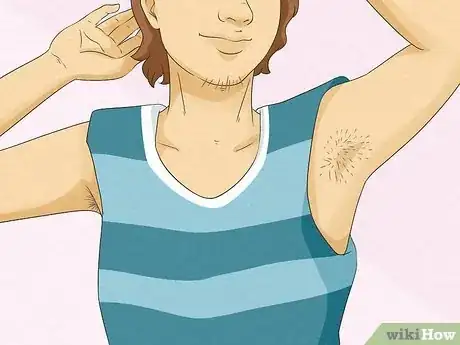



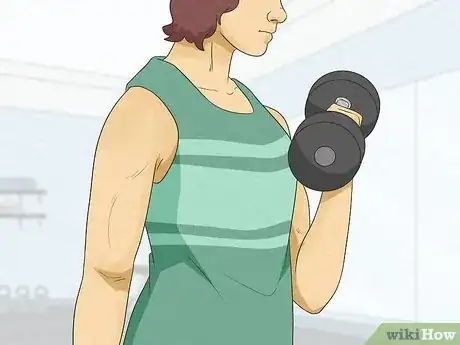

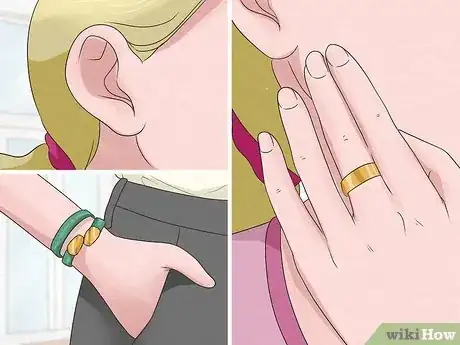


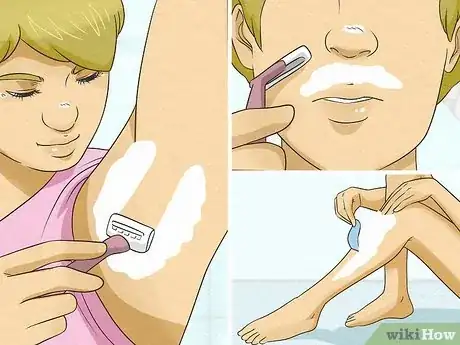


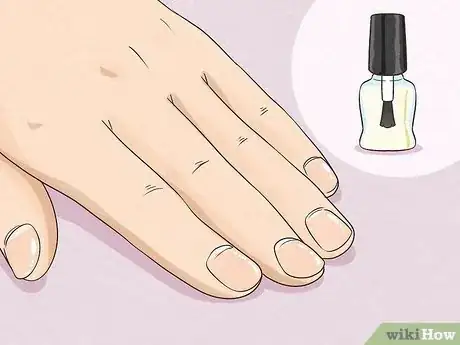
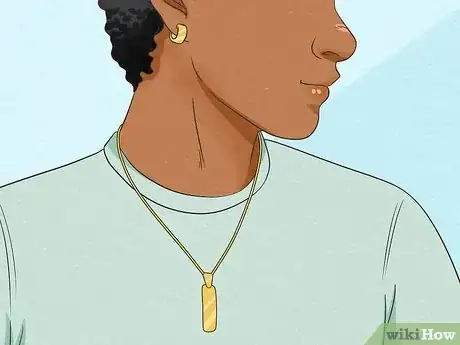


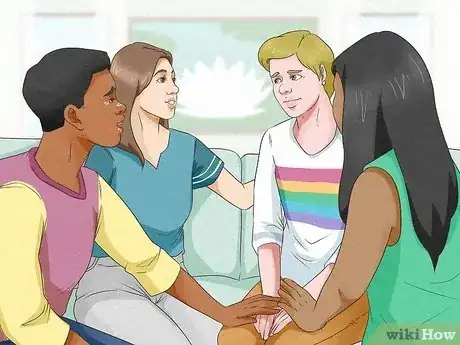


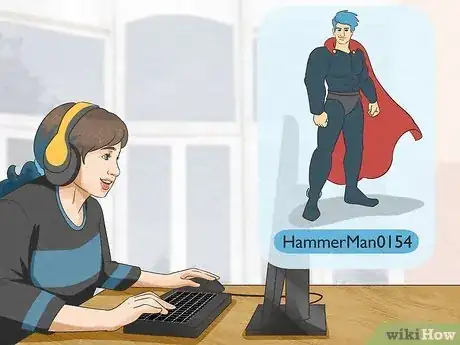




-Step-16.webp)
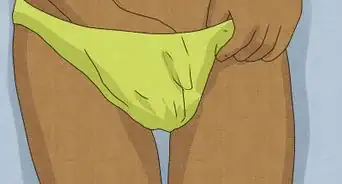

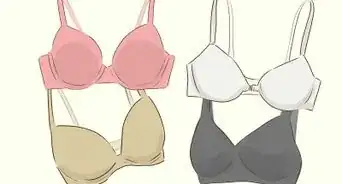
-Step-26.webp)
-Step-16.webp)
